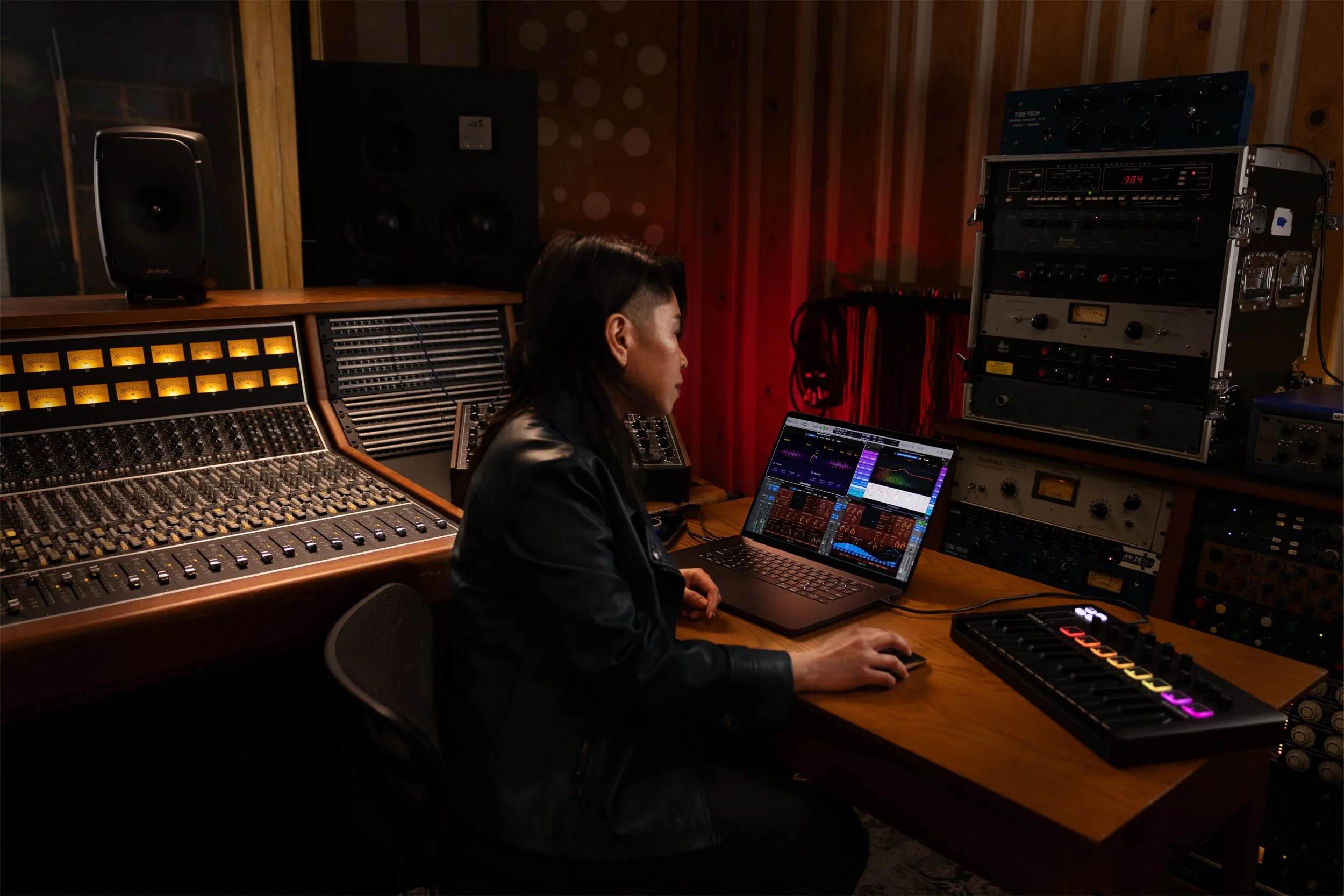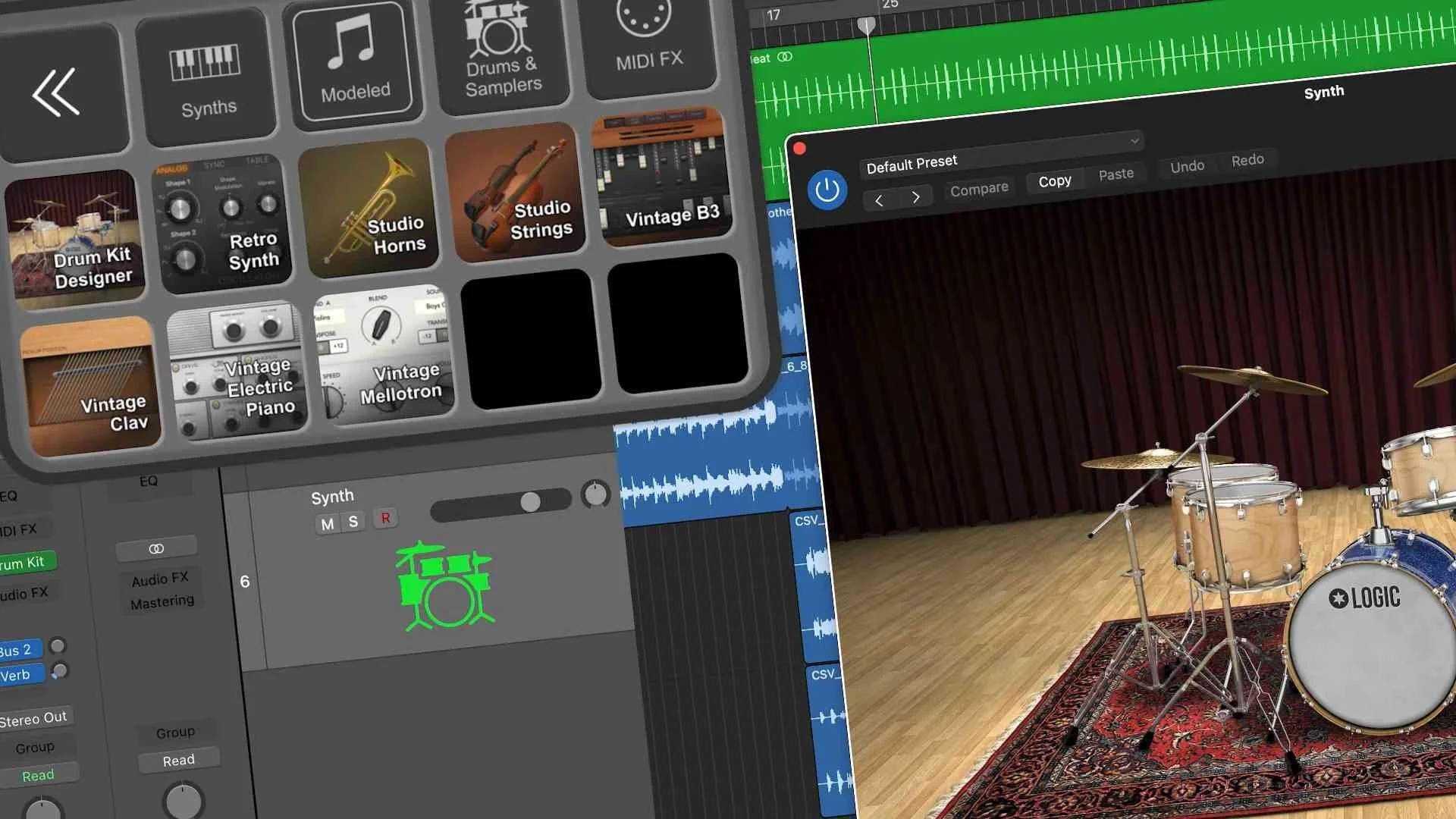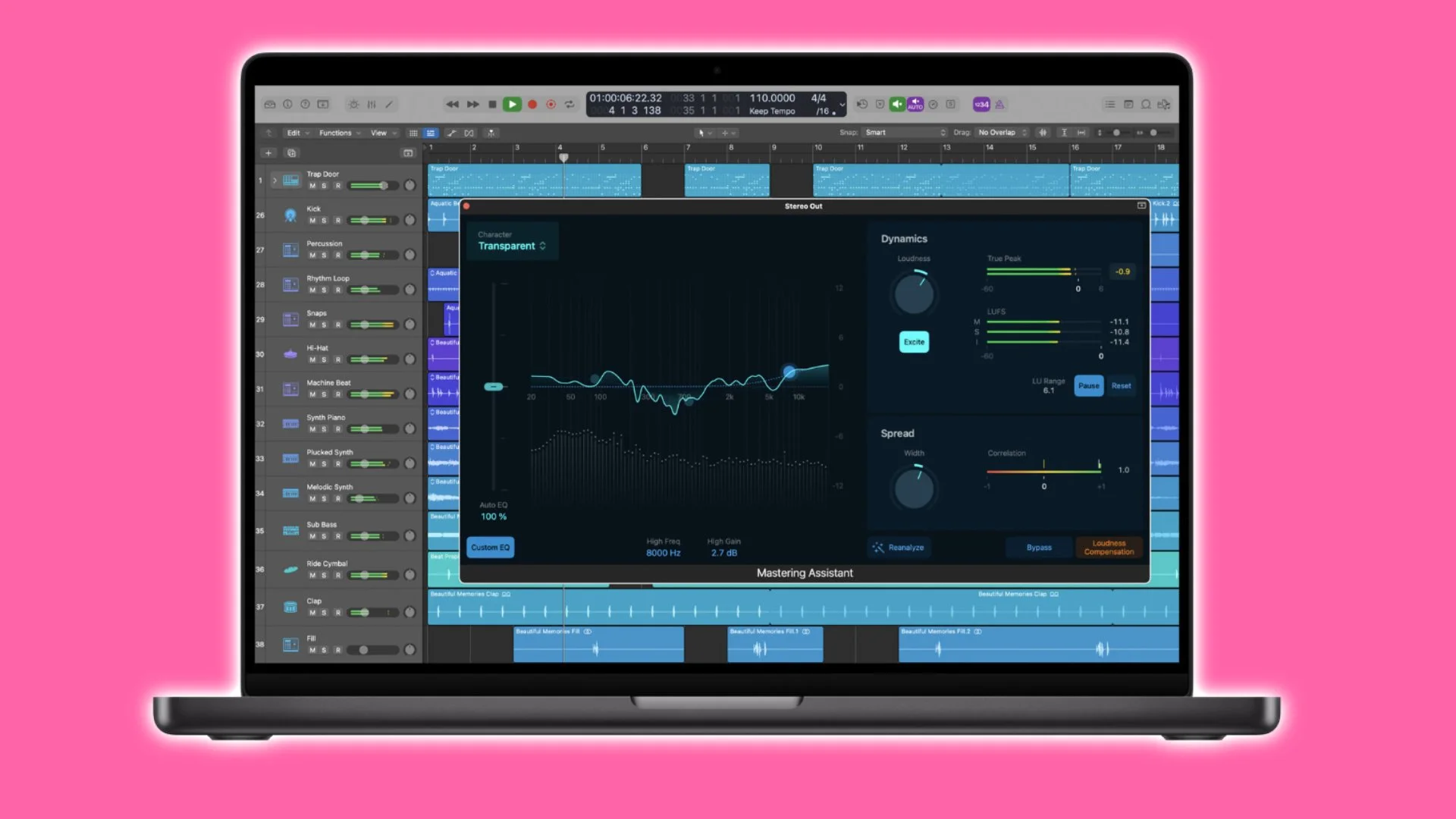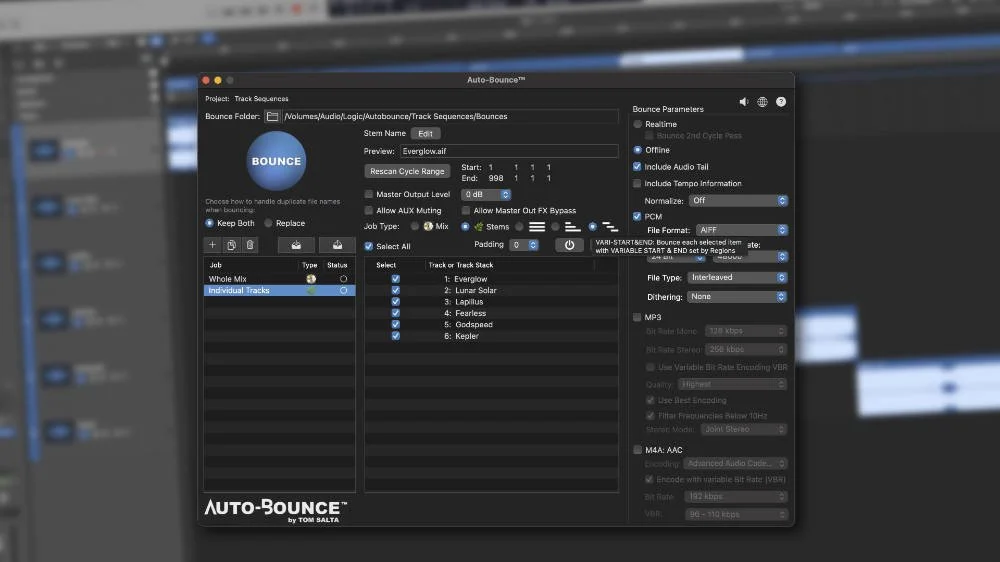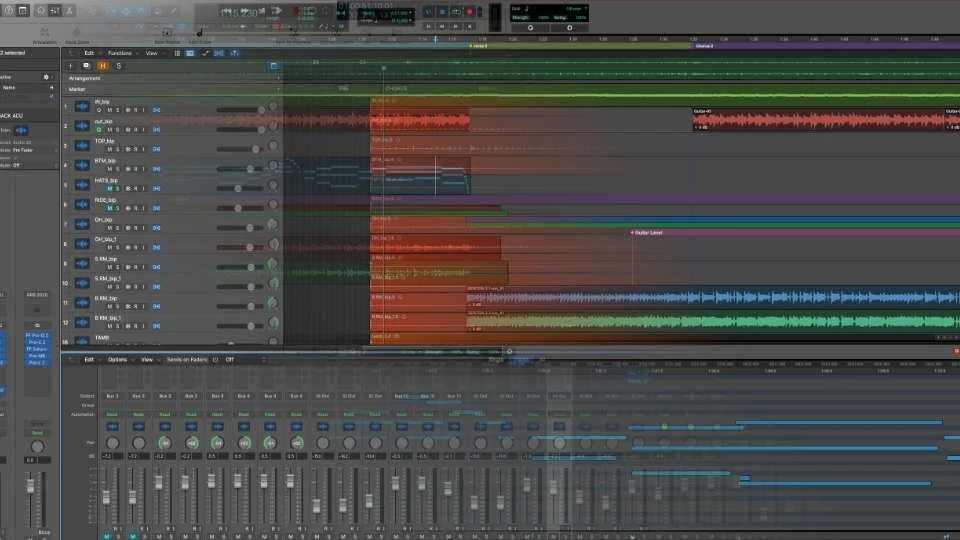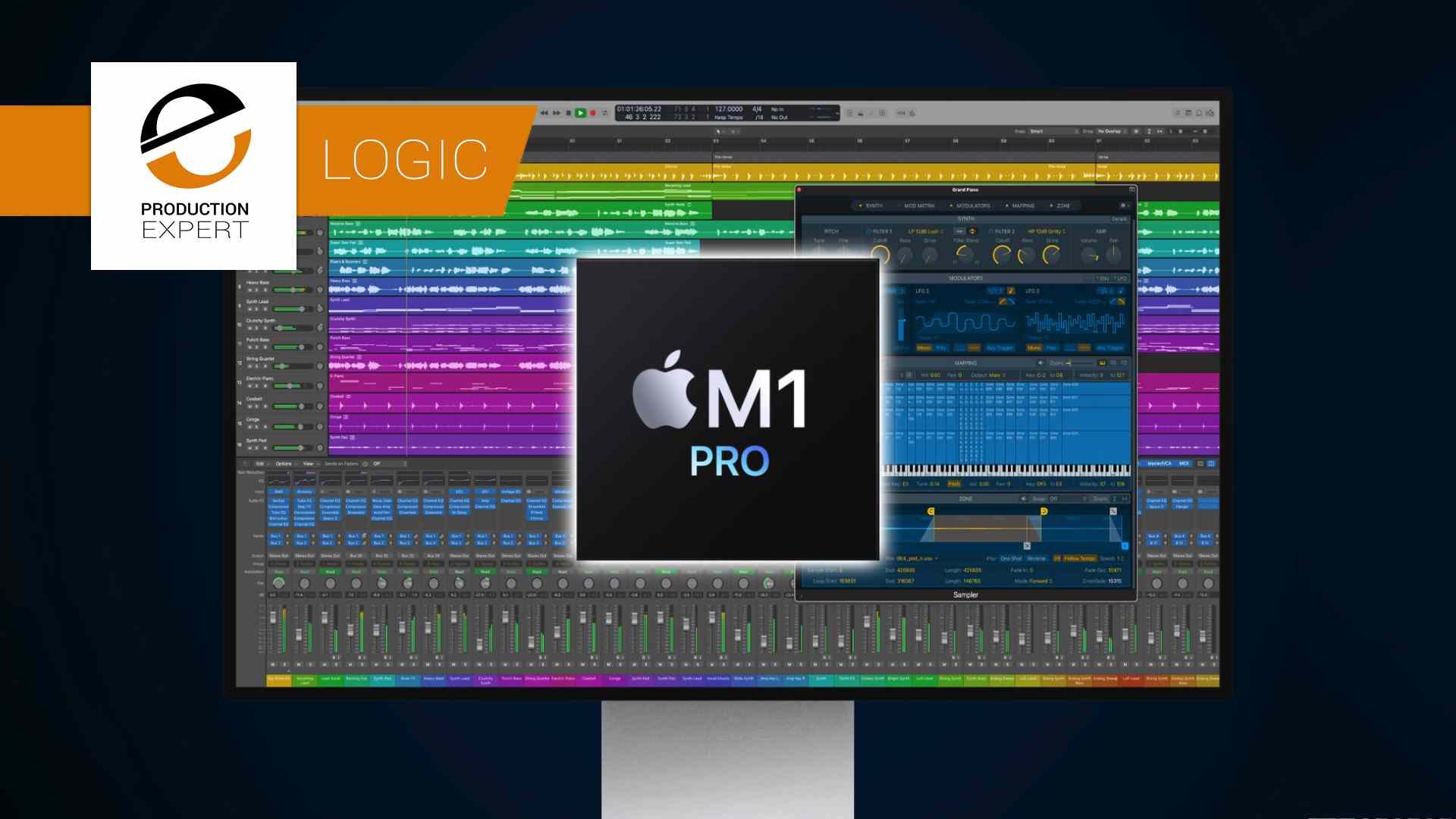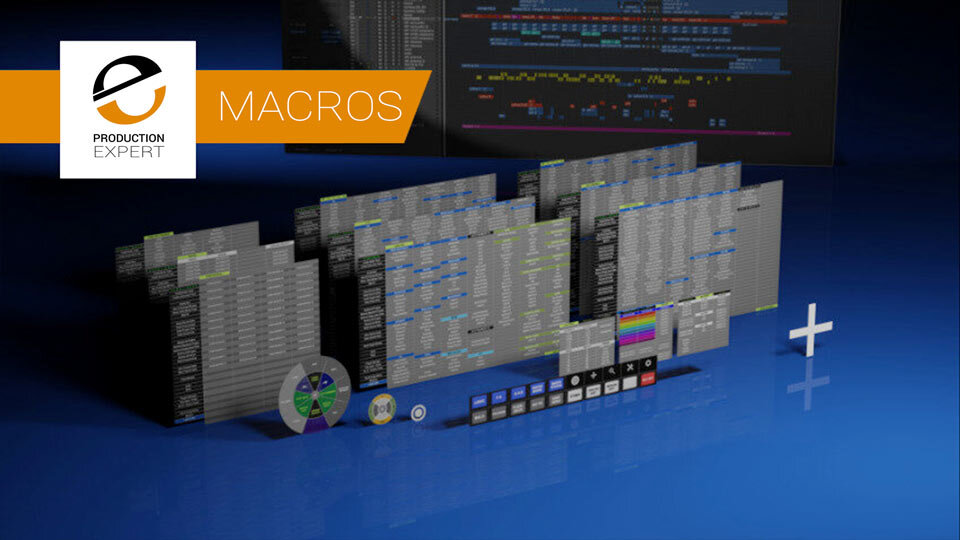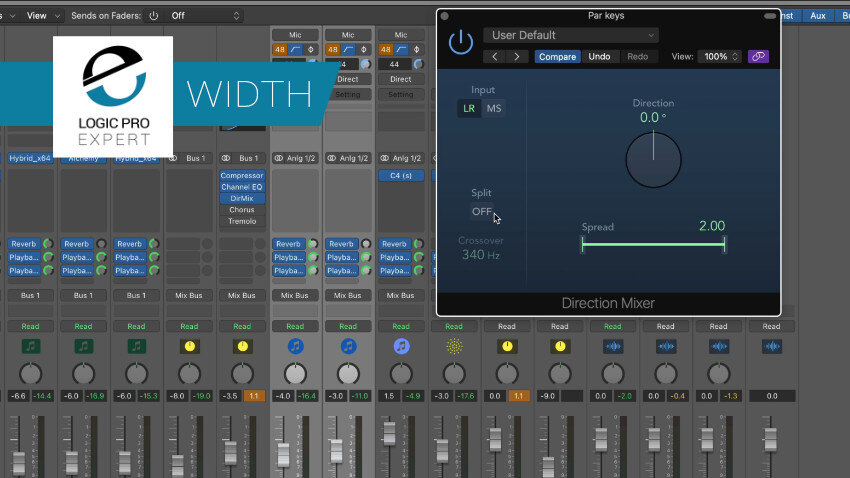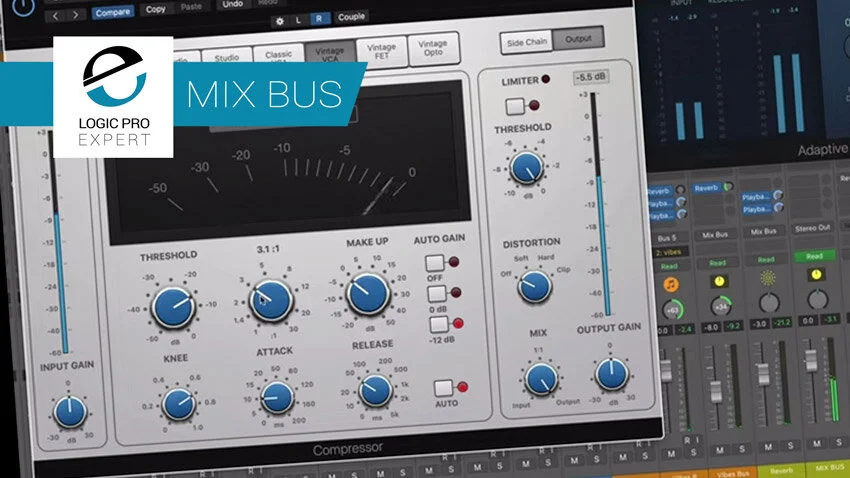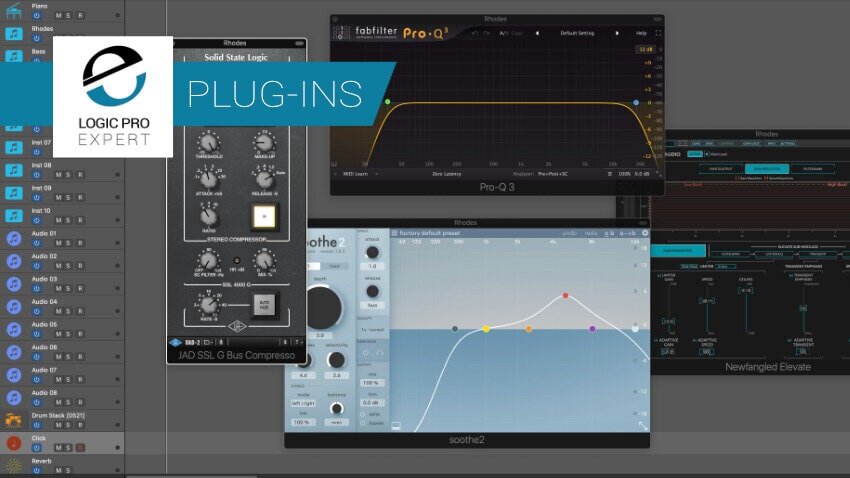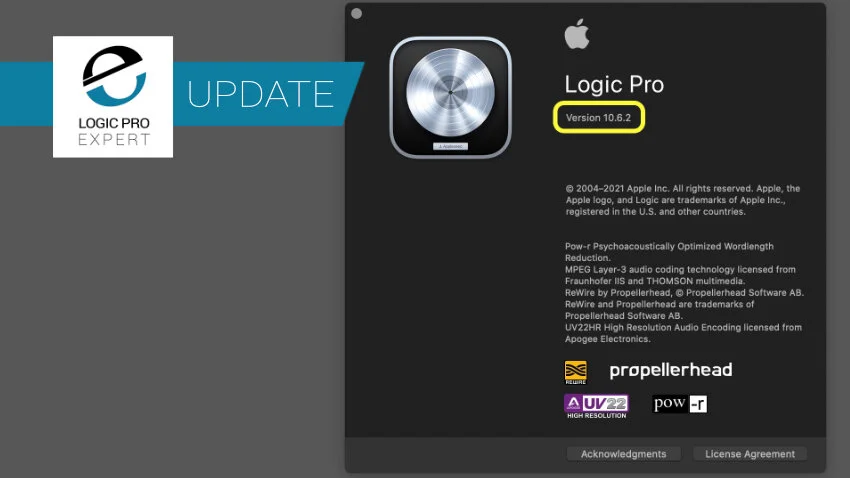Logic Pro Expert
Apple has introduced the latest versions of its music production software, Logic Pro for iPad 2 and Logic Pro for Mac 11, both set to, in their words; “transform professional music creation.” The updates, which will be available from May 13, incorporate AI to assist artists with songwriting, producing, and mixing tasks. We have the details.
Eli Krantzberg had never used the SoundFlow workflow platform before but with the new Logic Pro integration just announced, we asked him to check it out. Find out what the self-confessed “change resistant” musician thought in this article and video…
A lot of those coming to mix in Dolby Atmos for the first time are struggling with the basic setup of their DAW sessions, so, with the help of LiquidSonics, we asked three familiar faces (Steve Genewick, Eli Krantzberg and Tom Lowe, who are all users of the company’s reverb plugins) to share their own Atmos templates and advice.
Apple has announced an update to Logic Pro with new features for both Mac and iPad. This update is a move towards unifying the music creation experience across Apple devices. We have the details.
In this article James Richmond takes a first look at Auto Bounce by Tom Salta, which provides an effective means to automate the often laborious process of track bouncing and stem creation from Logic Pro.
Using a new DAW is about finding the things you already know how to do in your DAW of choice. James Richmond doesn’t profess to be a Pro Tools wizard but after 15 years of using it he’s picked up a few things and here is an overview for anyone who is familiar with Logic but wants to make the jump to the Avid way of doing things.
Every mixing engineer working on a Dolby Atmos Music mix in Logic was waiting for this feature which is now available: The ability to monitor your Dolby Atmos mix using Apple's Renderer in real-time. We have the details.
In this article Edgar Rothermich explains the differences between using the Dolby renderer and the built in Logic Pro renderer. Should you create your mix with the standalone Renderer app or the built-in Renderer, now fully integrated in Logic Pro v10.7?
How large a Logic Pro session can the new MacBook Pro M1 Pro handle? Spoiler alert, it’s over 650 tracks and 2500 plugins.
If you want to harness the power of Atmos in Logic Pro 10.7 the Logic Expert and Atmos guru Edgar Rothermich demystifies it. This includes an extended 47 minute video which will take you from zero to hero.
In this article Edgar Rothermich answers the question by considering what Apple Logic Pro does so well and where it drops the ball.
Logic Pro 10.7 was announced with Dolby Atmos. Read on for full details and watch a free tutorial on how to get started mixing in Dolby Atmos.
Discover Macros in Logic Pro with the Logic Pro S+ Macro Library from Flexi-deck
Hear what Logic’s dithering and noise shaping options sound like on low-level signal boosted via Gain plug-ins.
Vocal chops are fun. They stimulate creative rhythmic and melodic ideas that would otherwise be difficult to develop. Follow along in this video as I take a short vocal phrase, convert it to a quick sample instrument, create some vocal chop phrases, and add processing.
Logic has hundreds, if not thousands, of key commands designed to make using Logic easier and more efficient. Here, I'd like to share five originally unassigned key commands that I have assigned, improving my workflow immensely.
Follow along in this video to see how Eli Krantzberg sets up a guitar solo with a unique set of rolling repeats that swells and ebbs with the rhythm of the song.
See how to use parallel processing that includes side chain compression, EQ, chorus, direction mixer, and tremolo, to create interesting movement and width to a stacked keyboard part.
Apple seems to be taking their time getting things right with Logic 10.6 before moving on to the next greatest and latest new features. This third sub-release of Logic Pro 10.6 further refines the overall stability, and introduces important bug fixes.
Steve DeMott recently did an article on 2-Buss compression recently. In this video Eli takes some of his ideas and develop them using Logic's powerful and flexible built-in compressor plug-in. There is a lot more to this plug-in than initially meets the eye, especially when it comes to "glue" style bus processing.
We've assembled the expert panel once again, this time to answer the unanswerable: If you could only use one single third-party audio unit effects processing plug-in to augment Logic's already great arsenal, which would it be, and why? Which plug-in would you not be able to do without when mixing?
Logic Pro has two flagship reverbs that easily hold their own when compared side by side with the best third-party reverb plug-ins out there. I am, of course, talking about Logic's Space Designer and Chromaverb. They represent two completely different under-the-hood approaches to doing the same job, placing sounds within a space. See how our panel decides which one to use and when.
Apple has just dropped a new Logic Pro update. Version 10.6.2 focuses on bug fixes, reliability, and stability improvements.
Sometimes it's the simple things that make all the difference. There is a somewhat hidden feature in Logic that has been around since the beginning, in the early nineties. Many users don't know or care about it. Many others, blissfully unaware of its presence, clamour for it. I am talking about MIDI chase. What is it, and why should you care about it? Read on.

